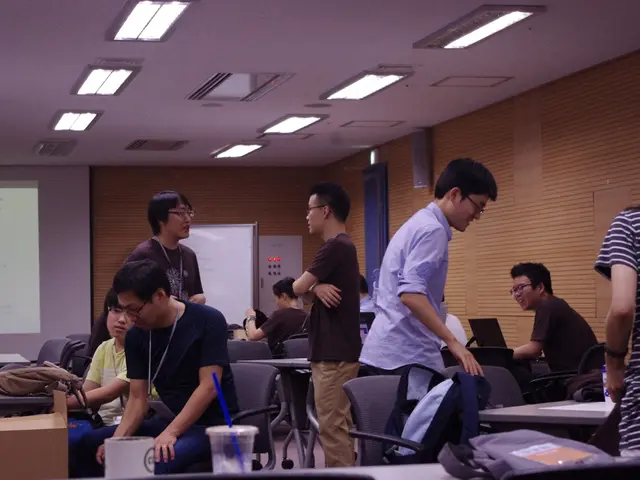Expanding Digital Infrastructure Within BIMSTEC: Catalyst for Regional Economic Partnerships
The Bay of Bengal Initiative for Multi-Sectoral Technical and Economic Cooperation (BIMSTEC) has announced an ambitious digitalisation agenda aimed at boosting economic growth and regional integration. The member countries - Bangladesh, Bhutan, India, Myanmar, Nepal, Sri Lanka, and the Maldives - are set to benefit from this transformative digital journey.
At the heart of this initiative is the proposed development of a unified e-commerce platform, inspired by India's Open Network for Digital Commerce (ONDC). This platform aims to enable local artisans and manufacturers to access nearby markets more efficiently, thereby providing a significant boost to local businesses.
The digitalisation drive extends to improving cross-border trade, with a focus on digitalising and automating customs and clearance procedures. The Asian Development Bank (ADB) report on BIMSTEC's Trade Facilitation Strategic Framework 2030 identifies these actions as key to streamlining processes, reducing barriers, and enhancing the efficiency of cross-border trade.
BIMSTEC's digital infrastructure development also includes fostering knowledge sharing and cooperation in fields such as biotechnology, nanotechnology, and pharmaceutical technology. This will pave the way for the development of mutually recognised certifications and the implementation of reskilling and upskilling programs.
Empowering women is a central tenet of BIMSTEC's digitalisation efforts. The organisation aims to ensure access to skill development, digital tools, financial services, and employment opportunities for women, thereby creating a supportive ecosystem for women entrepreneurs. Greater interactions among women from member countries will facilitate the exchange of best practices and foster growth.
The development of this digital infrastructure also aims to enhance connectivity and bolster various industry sectors, including fintech, edtech, agritech, and e-commerce. A business-friendly regulatory framework will support the growth of e-commerce within BIMSTEC, enabling the digital marketplace to thrive.
To facilitate seamless transactions, there is a need to develop efficient local transportation methods and robust payment systems within the proposed e-commerce platform. The digitalisation agenda prioritises cross-border digital linkages and interoperability, including a potential digital payment system.
BIMSTEC's digital public infrastructure development also aims to facilitate cooperation in areas such as common documentation, trade facilitation, standards, and e-commerce. The organisation has accelerated the establishment of the Technology Transfer Facility (TTF) to promote technological cooperation among its member states.
The burgeoning digital economy of Southeast Asia, projected to reach up to US$1 trillion by 2030, presents an opportunity for BIMSTEC countries to leverage. By positioning themselves as a significant player in the global economy, BIMSTEC's digitalisation efforts can lead to a transformative digital journey that benefits all member states.
In conclusion, BIMSTEC's digitalisation agenda is a comprehensive and far-reaching initiative aimed at boosting economic growth, regional integration, and empowering its workforce. By fostering knowledge sharing, cooperation, and the development of a unified e-commerce platform, BIMSTEC is poised to take a leading role in the digital age.
Read also:
- CBD and Marijuana as Potential Treatments for Migraines and Headaches?
- Strategies for Mitigating Negative Feelings in Customer Interaction with Your Goods or Services
- Tech Magnate Elon Musk Accuses Apple of Favoritism, as OpenAI Garners More Popular Support
- Exploring Profitable Business Opportunities in Nigeria: Discover Lucrative Businesses Immediately





